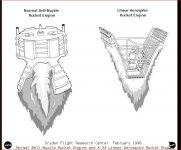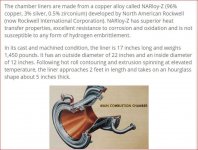JHOLLAND1
Titanium
- Joined
- Oct 8, 2005
- Location
- western washington state
60 years ago Rocketdyne Corp introduced the Aerospike rocket engine
implementation as a lift device never occurred
but a new high temp alloy lining conventional bell shaped engine nozzle was developed-- NARloy-Z
the story----------
Aerospike Engine - YouTube
implementation as a lift device never occurred
but a new high temp alloy lining conventional bell shaped engine nozzle was developed-- NARloy-Z
the story----------
Aerospike Engine - YouTube





